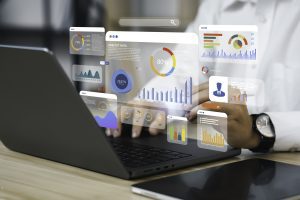Data analysts are in high demand in today’s data-driven world.
To excel in this field, there are several must-have technical skills that every data analyst should possess and this article will go over some of the most important ones.
Check out bootcamp for data analytics if you want to expand your skill set.
Data analysts should possess a strong foundation in programming, data visualization, statistics, data cleaning, machine learning and data warehousing.
By mastering these technical skills, data analysts can effectively analyze and interpret data to drive informed decision-making.
Go to Page Section:
Python Programming: The Backbone of Data Analysis
Python programming is widely regarded as the backbone of data analysis.
With its simplicity, versatility and extensive libraries, Python has become the go-to language for data scientists and analysts.
One of the main reasons Python is favored for data analysis is its readability and ease of use.
The syntax is straightforward and intuitive, making it accessible for both beginners and experienced programmers.
This allows data analysts to focus more on the analysis itself rather than getting caught up in complex coding.
Python also offers a vast array of libraries specifically designed for data analysis.
Python integrates seamlessly with other libraries such as NumPy for numerical computations, Matplotlib for data visualization, and Scikit-learn for machine learning.
This extensive ecosystem of libraries makes Python a comprehensive and efficient tool for data analysis tasks.
Furthermore, Python’s open-source nature and active community contribute to its popularity in the data analysis field.
The community continuously develops and improves libraries, ensuring that Python remains up-to-date with the latest advancements in data analysis techniques.
Python programming serves as the backbone of data analysis due to its simplicity, versatility, extensive libraries and active community.
Its ease of use and powerful tools make it an indispensable language for anyone working with data.
Data Cleaning and Preprocessing: Ensuring Data Quality
Data cleaning and preprocessing are essential technical skills for data analysts.
These skills involve the process of identifying and correcting or removing errors, inconsistencies and inaccuracies in datasets to ensure data quality and reliability.
Data cleaning involves tasks such as handling missing values, dealing with outliers, correcting data formatting issues and resolving inconsistencies in data entries.
This process ensures that the data is accurate and complete, which is crucial for making informed decisions and drawing meaningful insights.
Data preprocessing, on the other hand, involves transforming raw data into a format that is suitable for analysis.
This includes tasks such as data normalization, feature scaling, encoding categorical variables and handling data imbalances.
By preprocessing the data, analysts can improve the performance and accuracy of machine learning models and statistical analyses.
Having a strong understanding of data cleaning and preprocessing techniques allows data analysts to effectively handle and manipulate large and complex datasets.
It enables them to identify and address data quality issues – ensuring that the data used for analysis is reliable and trustworthy.
Data Visualization: Presenting Insights with Impact
Data visualization is indeed another must-have skill for data analysts.
As a data analyst, your main goal is to analyze and interpret data to derive meaningful insights and make informed decisions.
However, raw data can often be complex and difficult to understand.
This is where data visualization comes in.
Data visualization involves presenting data in a visual format, such as charts, graphs and infographics, to make it easier to comprehend and identify patterns, trends and relationships.
By visually representing data, you can effectively communicate your findings to stakeholders, colleagues and clients.
There are several reasons why data visualization is crucial for data analysts.
It allows you to quickly grasp the overall picture of the data and identify any outliers or anomalies.
Visualizing data also helps in identifying patterns and trends that may not be apparent in raw data alone.
Furthermore, data visualization enhances storytelling and enables you to effectively communicate your insights.
Visual representations of data are often more engaging and memorable than raw numbers or text, making it easier for others to understand and act upon the information you present.
Data visualization enables you to explore and analyze large datasets more efficiently.
By using interactive visualizations, you can drill down into specific subsets of data, filter information and gain deeper insights.










